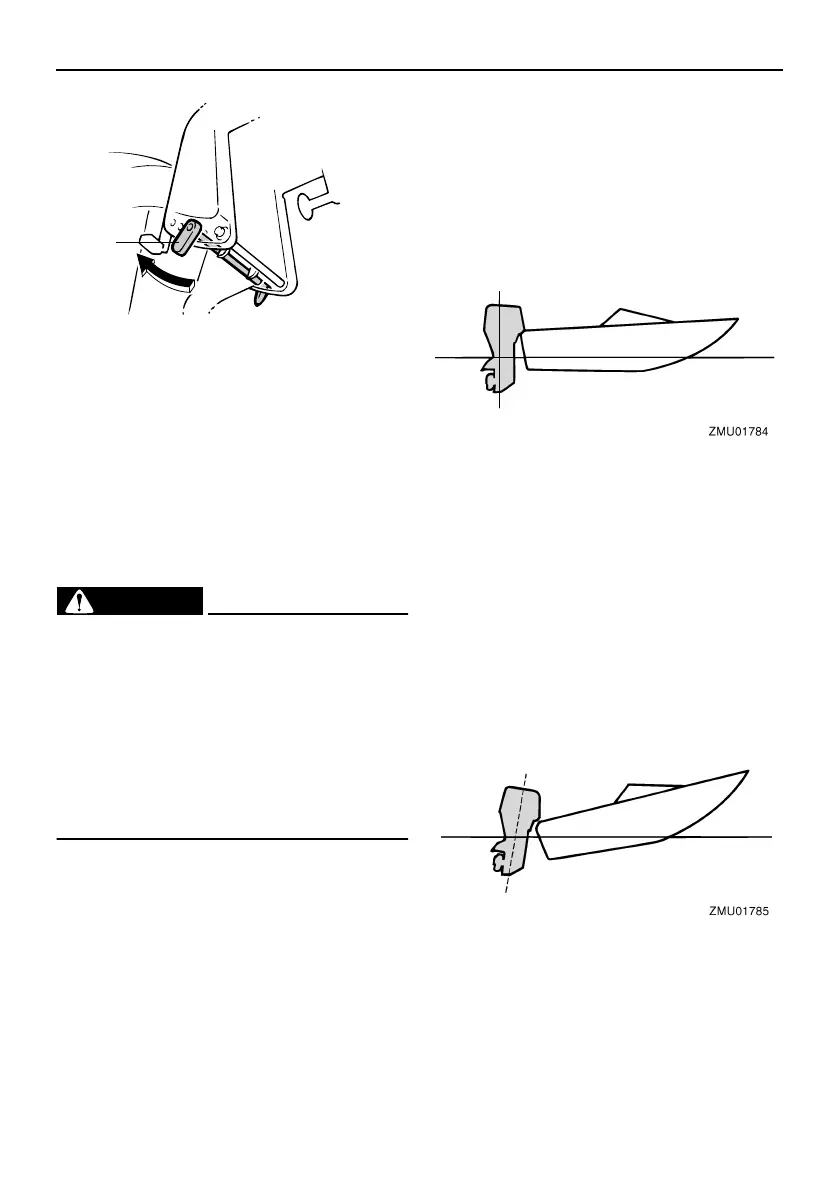Operation
37
3. Reposition the rod in the desired hole.
To raise the bow (“trim-out”), move the rod
away from the transom.
To lower the bow (“trim-in”), move the rod to-
ward the transom.
Make test runs with the trim set to different
angles to find the position that works best for
your boat and operating conditions.
WARNING
EWM00400
●
Stop the engine before adjusting the
trim angle.
●
Use care to avoid being pinched when
removing or installing the rod.
●
Use caution when trying a trim position
for the first time. Increase speed gradu-
ally and watch for any signs of instabil-
ity or control problems. Improper trim
angle can cause loss of control.
IP:
The outboard motor trim angle can be
changed approximately 4 degrees by shifting
the trim rod one hole.
EMU27912
Adjusting boat trim
When the boat is on plane, a bow-up attitude
results in less drag, greater stability and effi-
ciency. This is generally when the keel line of
the boat is up about 3 to 5 degrees. With the
bow up, the boat may have a greater tenden-
cy to steer to one side or the other. Compen-
sate for this as you steer. When the bow of
the boat is down, it is easier to accelerate
from a standing start onto plane.
Bow Up
Too much trim-out puts the bow of the boat
too high in the water. Performance and econ-
omy are decreased because the hull of the
boat is pushing the water and there is more
air drag. Excessive trim-out can also cause
the propeller to ventilate, which reduces per-
formance further, and the boat may “por-
poise” (hop in the water), which could throw
the operator and passengers overboard.
Bow Down
Too much trim-in causes the boat to “plow”
through the water, decreasing fuel economy
and making it hard to increase speed. Oper-
ating with excessive trim-in at higher speeds
also makes the boat unstable. Resistance at
1. Trim rod
ZMU02859
1

